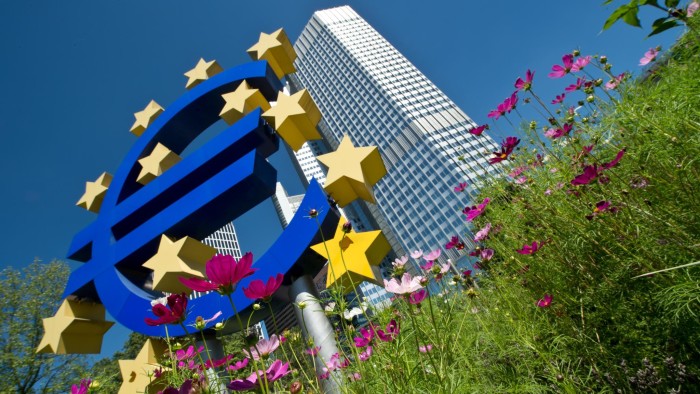ECB’s €1bn securities settlement system to go live

Simply sign up to the European companies myFT Digest -- delivered directly to your inbox.
After eight years of planning, construction and delays, a €1bn IT project to underpin a single European capital market is set to go live on Monday.
Banks and brokers hope to save millions annually in the cost of finalising cross-border payments for securities with a new link that connects settlement houses with the European Central Bank.
The ECB-led venture, known as Target2Securities (T2S), was conceived in 2007 to unify the region’s expensive and complex settlement system. It aims to put Europe more in line with the US, where fees are lower because it has a more centralised clearing and settlement infrastructure.
Over its long gestation, T2S has faced criticism that it was too complex and ambitious, while others doubted the viability of an IT project largely undertaken in-house by a regulator.
“This marks an evolution of the European capital markets and takes Europe into a leadership role. There’s no other region with something like this,” said Satvinder Singh, head of institutional cash and securities services, in the global transaction banking unit of Deutsche Bank.
T2S will effectively outsource large chunks of securities settlement from 23 of Europe’s central securities depositories (CSD) to the ECB. At a CSD, a transaction is confirmed as final and the security swapped for cash. That money can come from either other commercial banks or accounts held at a central bank.
Some banks prefer dedicated central bank accounts as they reduce the exposure to a counterparty. T2S means banks will be able to settle their transactions via just one CSD rather than multiple venues.
“It will make cross-border settlement much simpler. It can be a little bit complicated as each CSD has a different way of doing things and this will create standardisation and speed up the process,” said Alan Cameron, head of relationship management for international banks and brokers at BNP Paribas.
Few expect fireworks on the first day as the ECB intends to launch the project in four stages. The first wave consists of national CSDs from Switzerland, Malta, Romania and Greece, which collectively account for only a fraction of the total number of Europe’s annual transactions.
A fourth, Italy’s Monte Titoli, will take that total to about 17 per cent but it has delayed going live until the end of August while local banks still prepare. Next year will mark the entrance of Belgium-based Euroclear and Germany’s Clearstream, the two largest CSDs.

Market participants have concerns about the project’s long-term viability. Its running costs are €76m per year. The ECB estimates it will have cost €1.15bn by 2024. To recoup it, the ECB will charge €0.15 per transaction but it must do without the UK and Sweden, which have so far opted out of the project. It is also not adapted for mutual funds.
“It all depends on volumes but it’s uncertain. Nobody knows what the volume is going to be next week, let alone next year. T2S is a competitive threat to many parts of the market as it’s going to attack their revenues,” said Tony Freeman, executive director, industry relations at Omgeo, a post-trade services company.
Comments